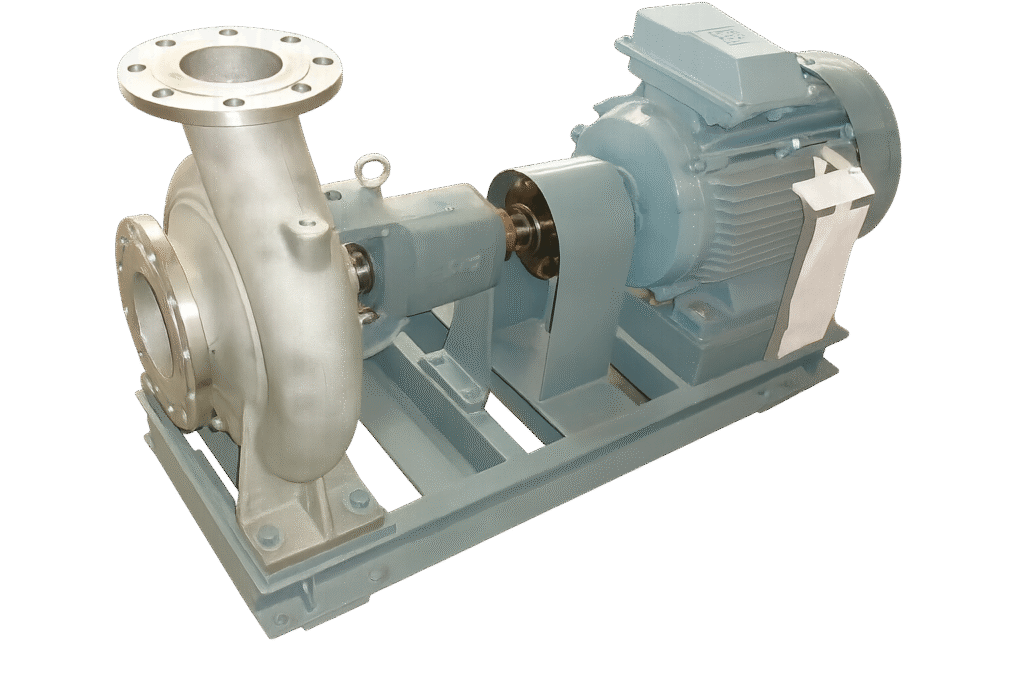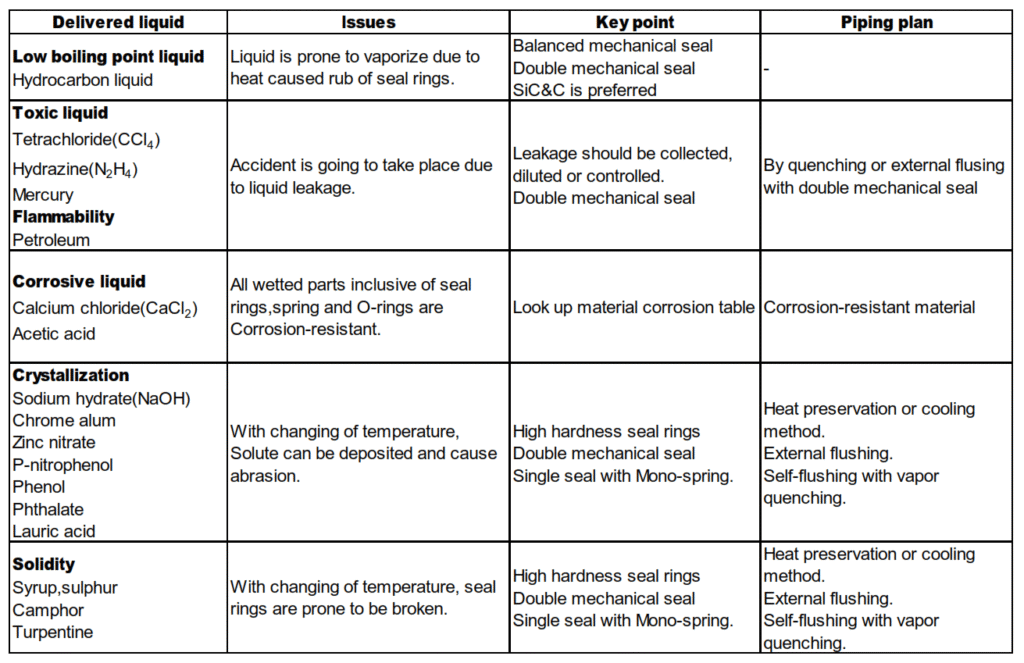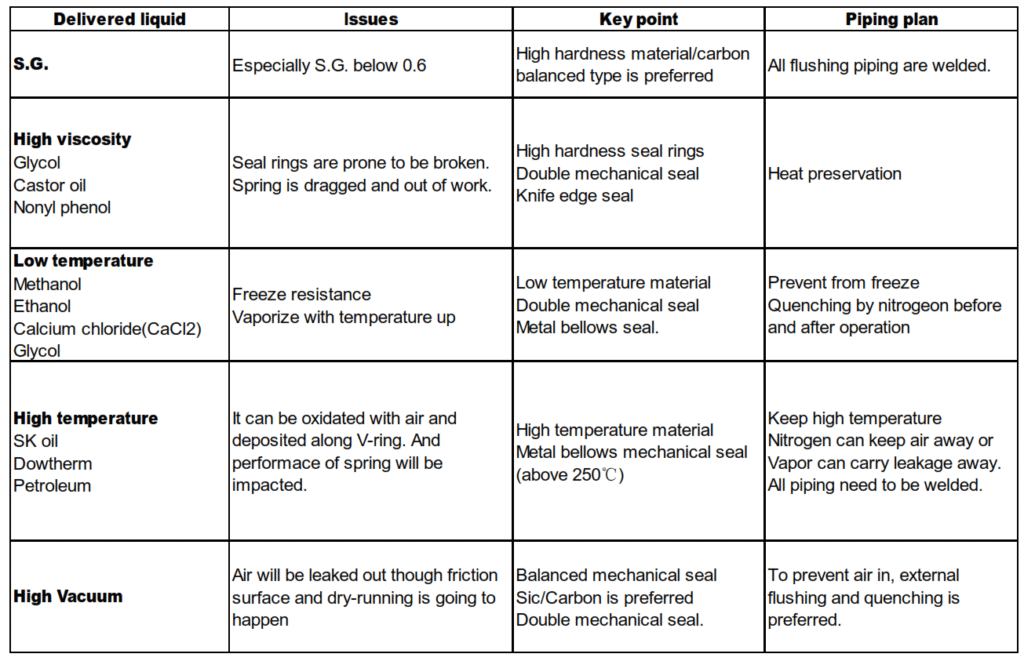Your cart is currently empty!
EBARA FSSC – INTRODUCTION



OIL lubrication – Bearing

1,Selection of turbine oil.
ISO VG46
2,Maintenance
Change the oil after 300 hours for new bearings.
Add oil until level is at the center of the sight glass.
3,Sight glass
Dimensions comply with JB/T7941.2
Technical requirements comply with GB1163
Flushing for gland packing

1) If delivered liquid temperature is over than 100℃, external flushing is recommended.
2) If self-flushing with above 0.3MpaG pressure is adopted, Return pipe is necessary which connects stuffing box to suction.
3) If pressure of stuffing box is over than 0.3MpaG, the only flushing method is plugged.
4) External flushing conditions:
a) Flushing fluid:Normal water(below 30 ℃)
b) Flushing capacity

c) Flushing Pressure =( Pdis-Psuc )×0.05+ Psuc+0.05MPaG.
Pmin=0.15MPaG Pmax=0.3MPaG
Quenching for below conditions
1) Crystallization takes place when liquid touches air.
2) Liquid temperature is over 100 ℃ with self-flushing or being plugged.
3) Suction pressure is negative without flushing.
4) Saturation pressure of liquid is over 0.1MPaA..
5) With Normal water: Crystal can be dissolved by water. With hot water: Crystallization happens in low temperature.
6) Quenching parameter: Capacity:2l/min Pressure:~0.05MPaG.
Flushing for mechanical seal

1) Self-flushing
a, Clean liquid exclusive of slurry
b, Leakage will not be crystallized and is harmless.
c, The high temperature liquid with low viscosity can be cooled by cooler.
2) External-flushing
a, Slurry or equivalent liquid
b, Leakage is harmful or customer has special requirement.
c, Liquid can separate out crystal with pump operation or start-stop.
d, Flushing capacity.

e, Flushing pressure.
Pressure= Pressure of seal chamber + 0.05MPa
PS: the Min Pressure will be 0.15 MPa.
Quenching for below conditions
1) Quenched by normal water
a, Toxic, irritative and water-soluble liquid. For example: Liquid ammonia.
b, Leakage can be crystallized and water-soluble. For example: Sodium hydrate solution.
c, The gauge pressure is below 0.
2) Quenched by warm water or vapor
a, Leakage can be crystallized in normal temperature.
For example: Sulphur , Animal and vegetable oils, Amine, Pitch, Phenol, Urea, Heavy crude etc.
3) Quenched by methanol.
a, Pumped liquid temperature is below 0℃. The seal needs to be quenched when start-stop.
4) Quenched by Nitrogen.
a, Heat medium, hot oil can be oxidized when being exposed to air.
b, Pumped liquid temperature is below 0℃. It prevent seal from freezing by quenching.
Flushing plan
-10℃~80℃:self-flushing(Plan 11)

80℃~150℃:Self-flushing plus heat exchanger(Plan 21)

80℃~150℃:external flushing(Plan 32)

-40℃~-10℃:Quenching by external reservoir (Plan 51)

-40℃~-10℃: Quenching by external source (Plan 62)

Key point of seal configuration



Leave a Reply